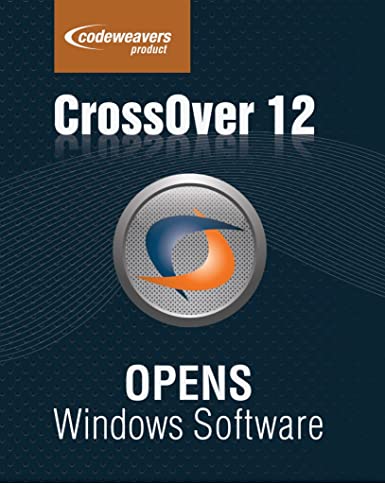

There is also a longer list of programs that work albeit with minor issues and a genuinely short list of programs known to not run at all. To address this, the developers maintain a ranked database of programs tested with Crossover.Ī handful of programs are “officially supported” to run under Crossover (Microsoft Outlook, Half-Life 2, Quicken, … ) and a few dozen others have been tested and shown to work just fine. (Note: All the ones that *I* tried happened to work just fine). The down side of course is that not every Windows program will run correctly in the Wine environment. (There is a big gulf between running well and running fully native.)Ĭodeweavers also makes a version for Linux, bringing a simple transparent Wine compatibility layer to that platform as well. Naturally the menus of Windows apps remain attached to their windows– but that’s life in windows-app land. And, the very best thing that you can possibly say about a program like this is true: It is easy to forget that you are using it. It runs in its own window just like any other program does.

From then on, you just double-click your program in the Finder to open up your application.
Windows crossover for mac install#
You install new programs the usual way– e.g., download and double-click the “.EXE” installer. Working with applications that run under Crossover is nearly transparent. It’s called Crossover Mac, and it’s $60 from Codeweavers.Īnd the verdict? It’s not for everyone, but it’s a great start. It turns out that there is even a Parallels-like virtualization environment so that you can run programs programs in Wine alongside Mac programs.
Windows crossover for mac software#
So why not look at Wine? Wine is a venerable software compatibility layer that allows unix-like operating systems to run programs designed for Windows. And, while contemplating the $200-$300 cost of a legitimate Windows license, it might occur to you that the goal in this case is to run a program that runs under Windows– not actually to run Windows itself. I recently came across an esoteric “Windows only” electrical engineering program that I wanted to run on my Mac (LTspice/SwitcherCAD III - more about that later). You can do this using Apple’s Boot Camp utility, or through virtual machine programs such as Parallels. One of the nice things about having an Intel-based Mac is that you can, in principle, run a variety of operating systems including Microsoft Windows.


 0 kommentar(er)
0 kommentar(er)
